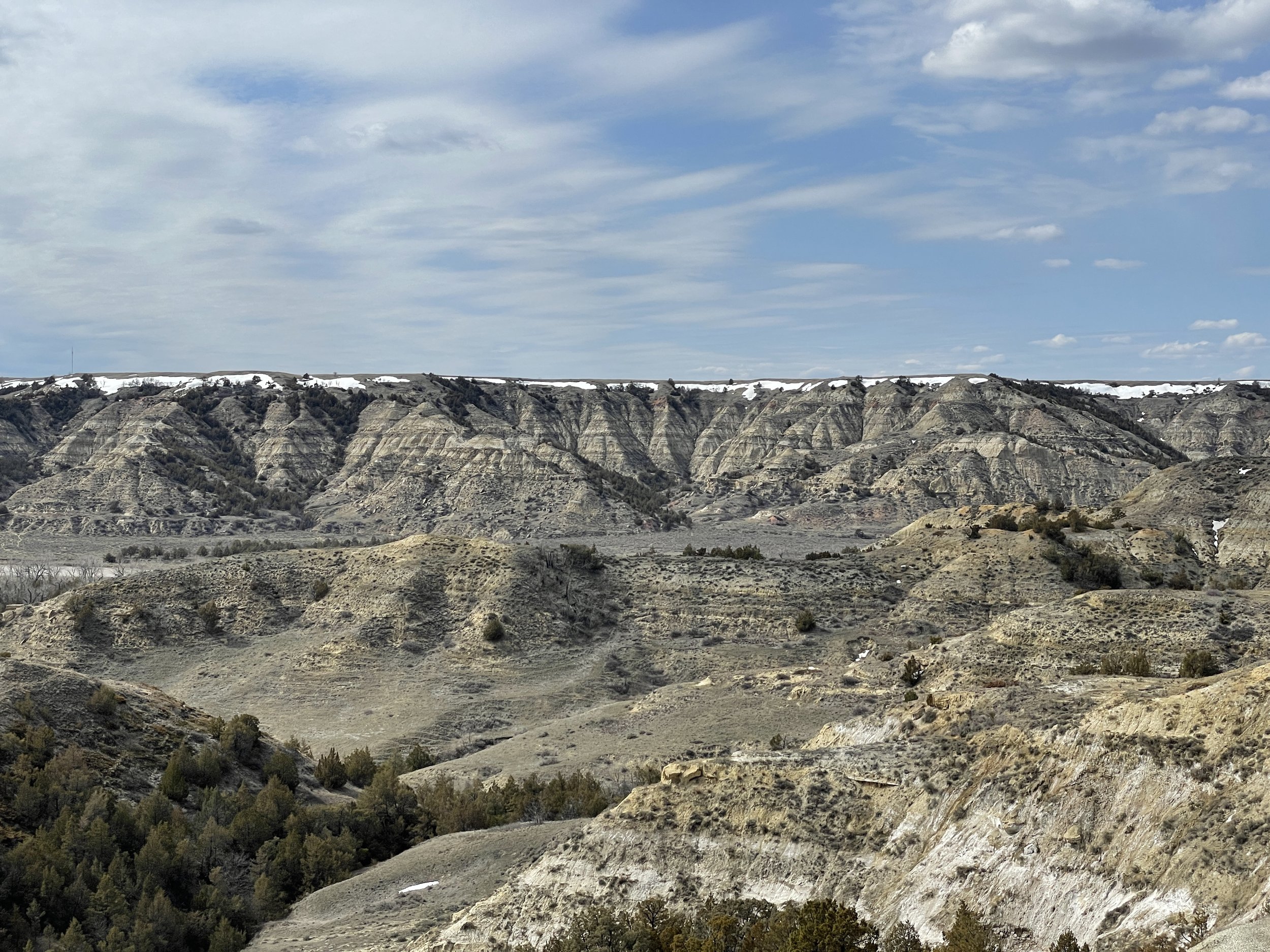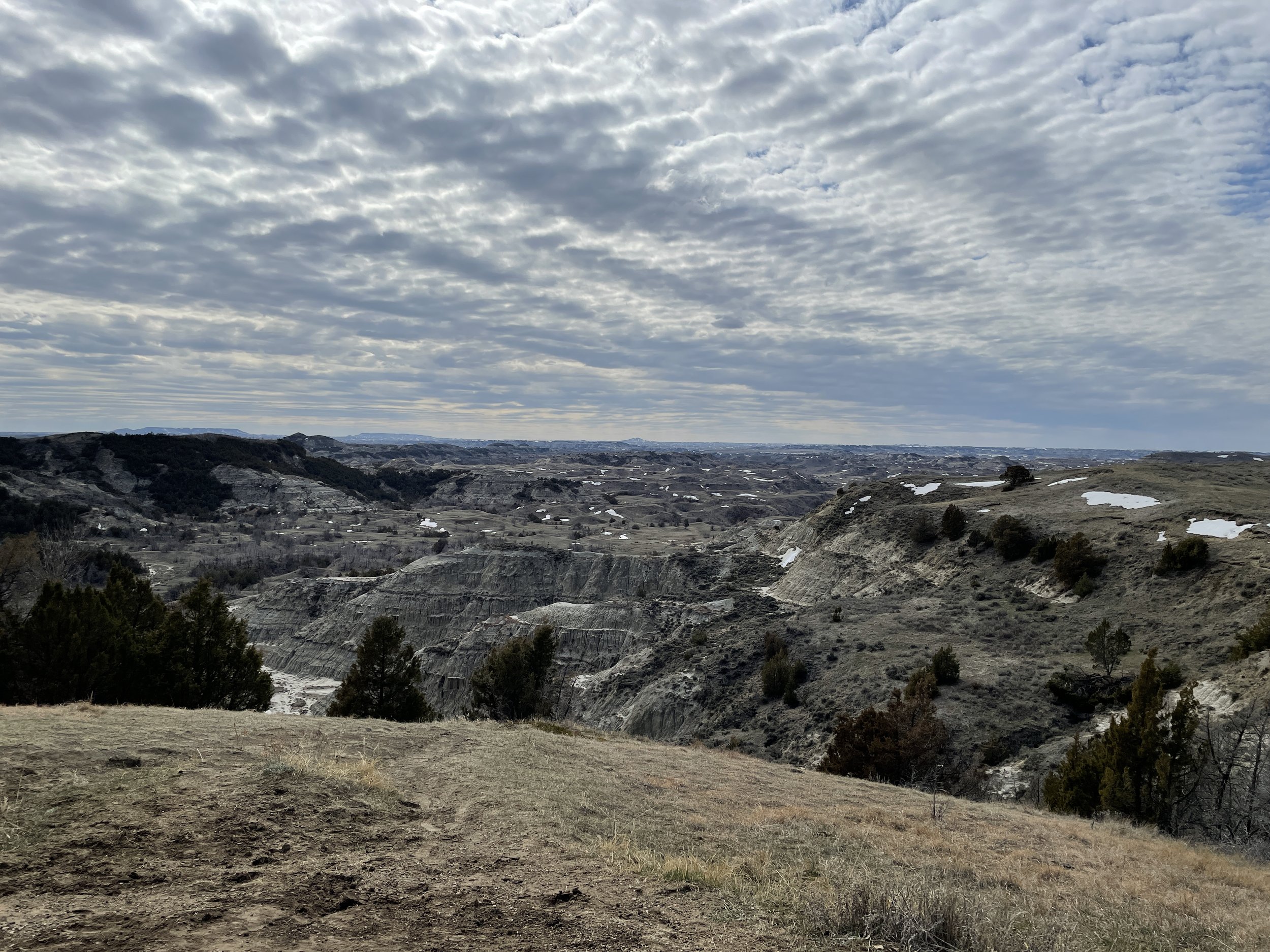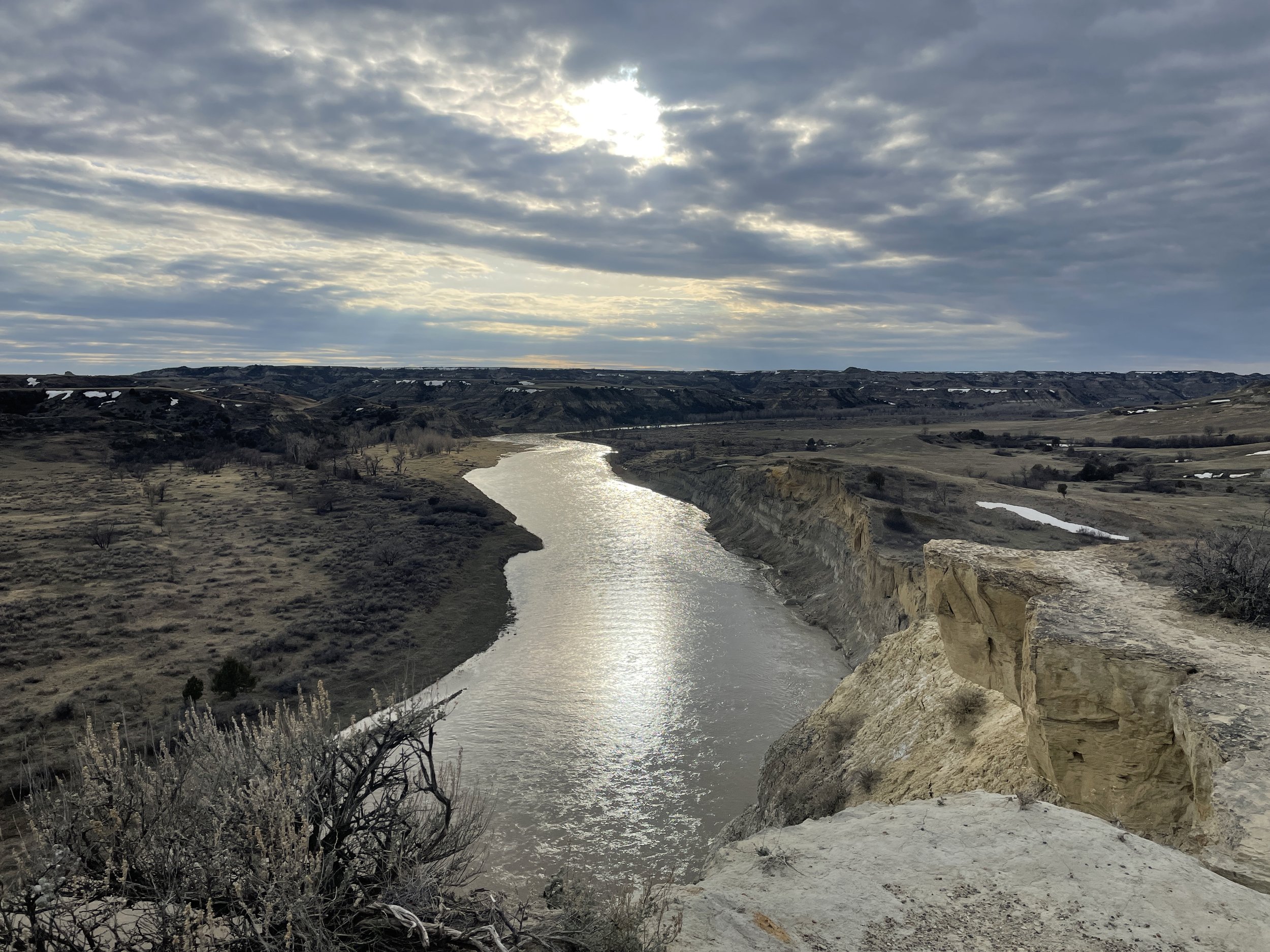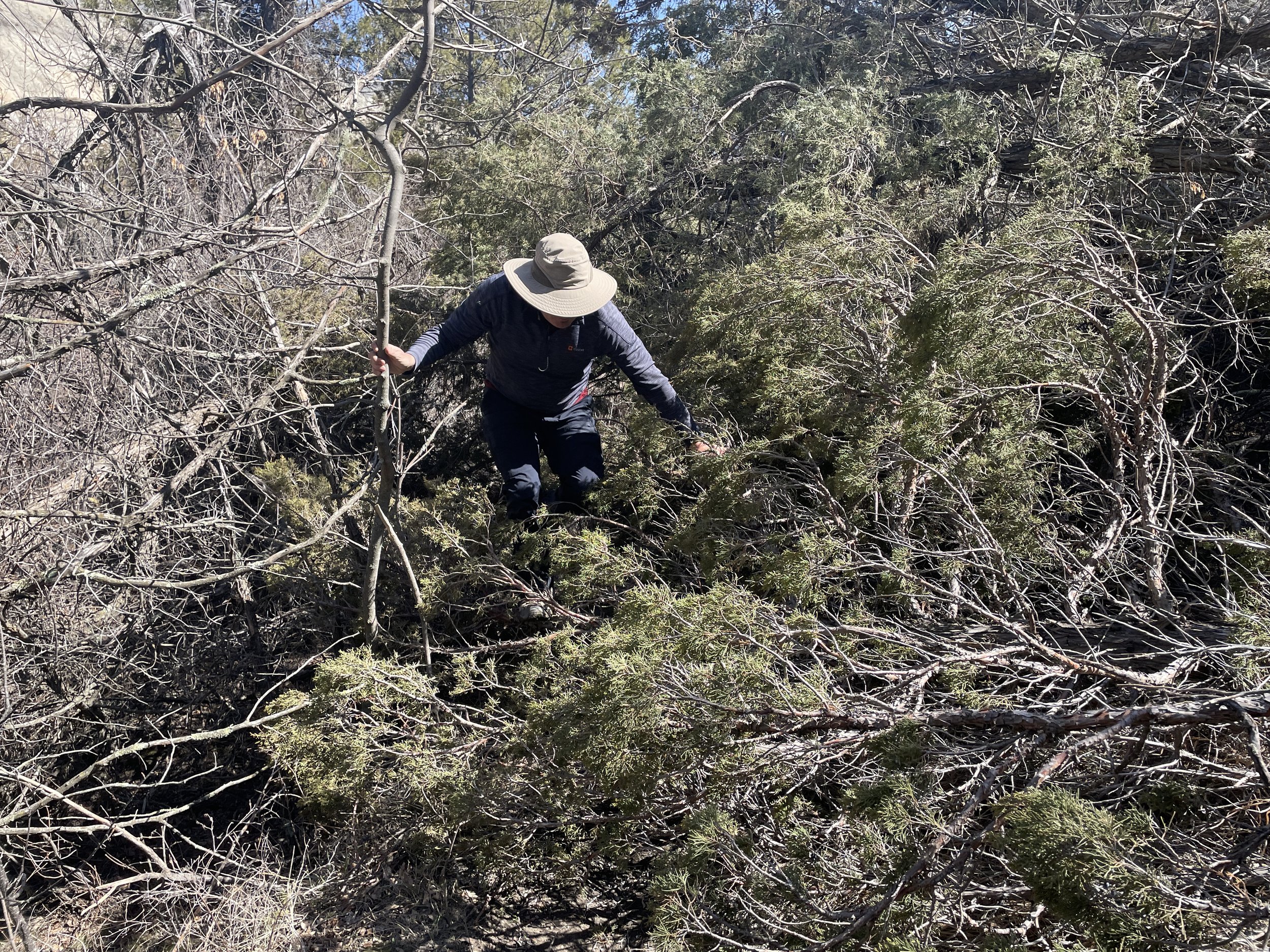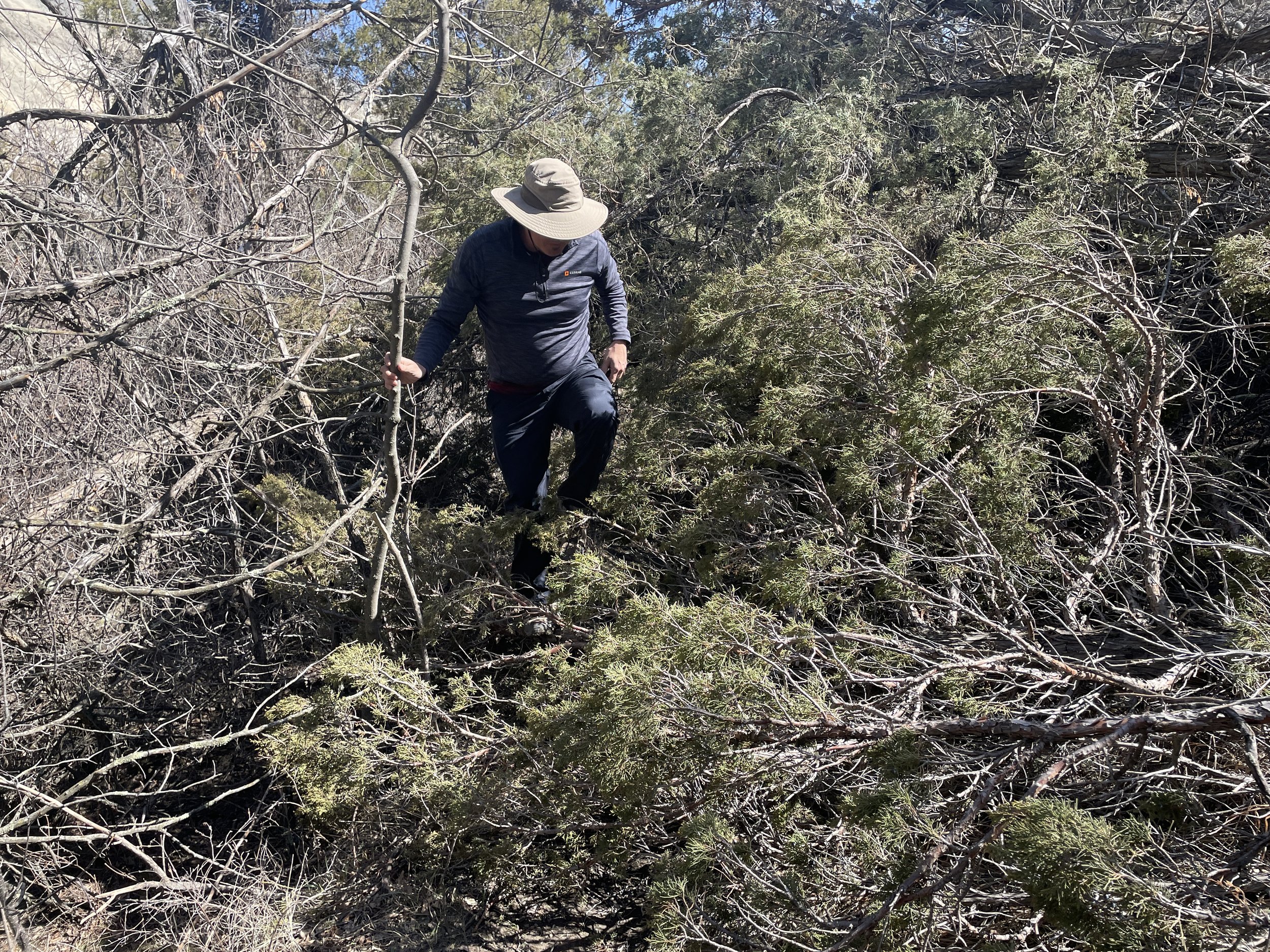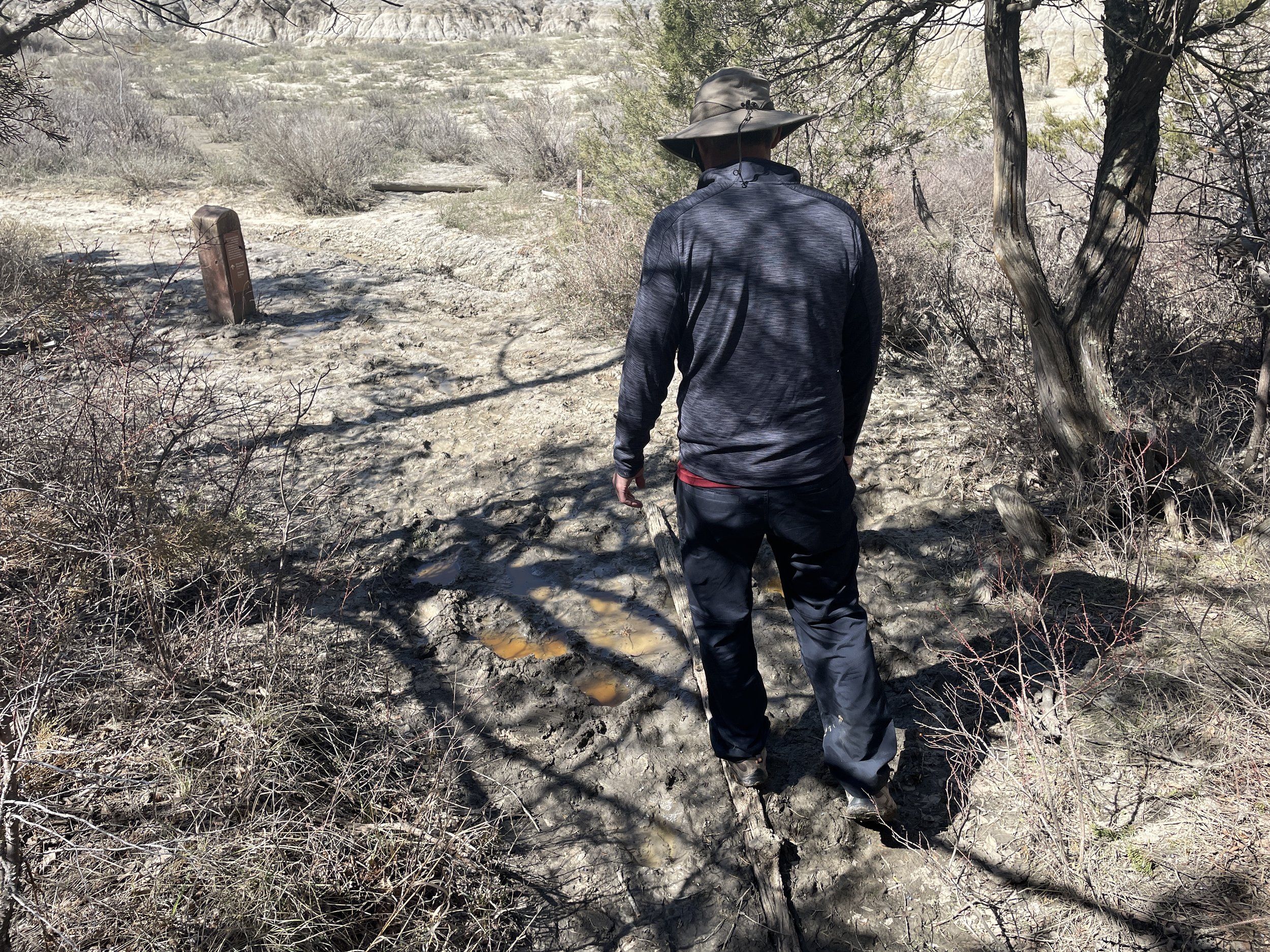Beautiful Landscapes at Theodore Roosevelt National Park
On May 2nd, 2022 we made it to North Dakota. State #21 on our adventures! Theodore Roosevelt National Park was established in 1947 as a national memorial park to honor the president who protected over 230 million acres of land and created some of the national parks that we have enjoyed on our adventures. We visited both the South and North Units of the park which are 68 miles apart, and both had amazing views! We tried to do a hike but since the park wasn’t officially open yet we encountered serious obstacles on the trail and had to bail once we got to the paved park road.
Theodore Roosevelt National Park History
I learned in the park brochures that in 1883, Roosevelt first visited the Dakotas to hunt bison and to invest in a local cattle operation. A year later both his wife and his mother died on the same day, February 14, which had to be completely devastating. He later returned to the Dakotas and started a second ranch called Elkhorn, but by 1887 Roosevelt had to give up ranching because his herds had been destroyed by drought and blizzards. He moved back to New York to continue his political career.
Roosevelt is said to have credited his Dakota experiences as the basis for his preservation efforts. As president, he established the US Forest Service, and he signed the 1906 Antiquities Act. This proclaimed 18 national monuments, including Devils Tower, which you can read about in our Devils Tower - First National Monument article. He also worked with Congress to create five national parks, 150 national forests, and dozens of federal reserves. Thank you, Roosevelt!
There are three units of the Theodore Roosevelt National Park: South Unit, Elkhorn Ranch Unit, and North Unit. We explored both the South and North Units. We skipped the Elkhorn Ranch Unit as the roads are unpaved, steep, and wash out easily, and given the recent storm, we figured the roads would be in bad shape.
South Unit
To visit the South Unit, we camped at Boots Campground in Medora. This campground was another Passport America deal. After getting settled in we headed out to explore the park. As we drove Scenic Drive we first saw feral horses and it made us think of the Millet family and their horses. We drove Scenic Drive all the way to the road closure and then back. This is usually a 36-mile scenic loop but currently, the last part of the loop is closed due to road reconstruction so it is an out-and-back. We stopped at all the points of interest, walked the short hikes, and even stopped to check out the burning coal vein that is still smoking to this day.
North Unit
To visit the North Unit, we stayed at my long-time family friend’s RV park. Thank you, Crisp family! We drove to Caprock Coulee Loop but the road was closed after that point since it was still winter. We decided to hike the Caprock Coulee Loop, which was supposed to be a 4.2 miles loop that according to NPS is the most scenic trail in the park. Since it was winter and the park wasn’t officially opened yet, the trail hadn’t been cleared so we encountered lots of obstacles. We even questioned at one point if we made the correct decision hiking this trail and if we should turn around. We pushed through and conquered downed large trees, flooded sections, and parts still covered in deep snow where we couldn’t see the trail but at least there were some tracks from previous hikers. Once we got to a section that intersected the paved road we gave up on the trail and walked back via the road since we figured we had already pushed our luck enough.








